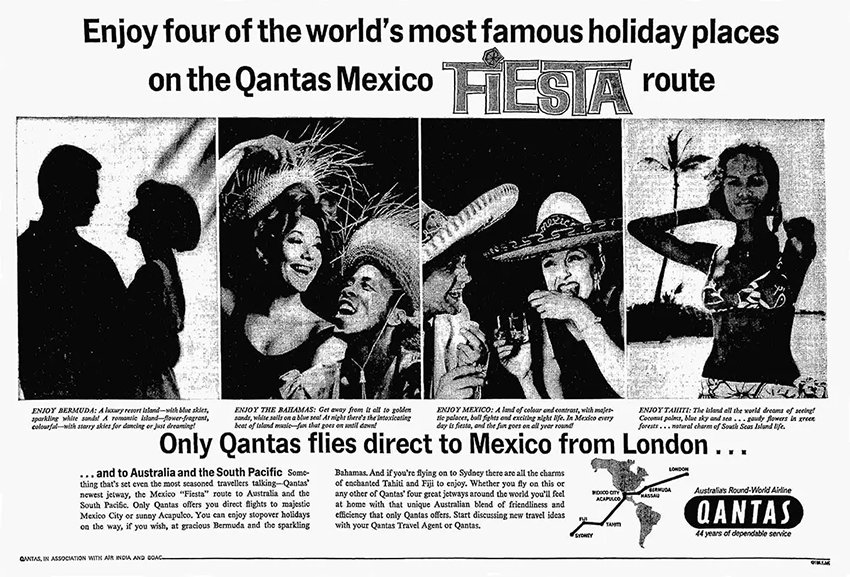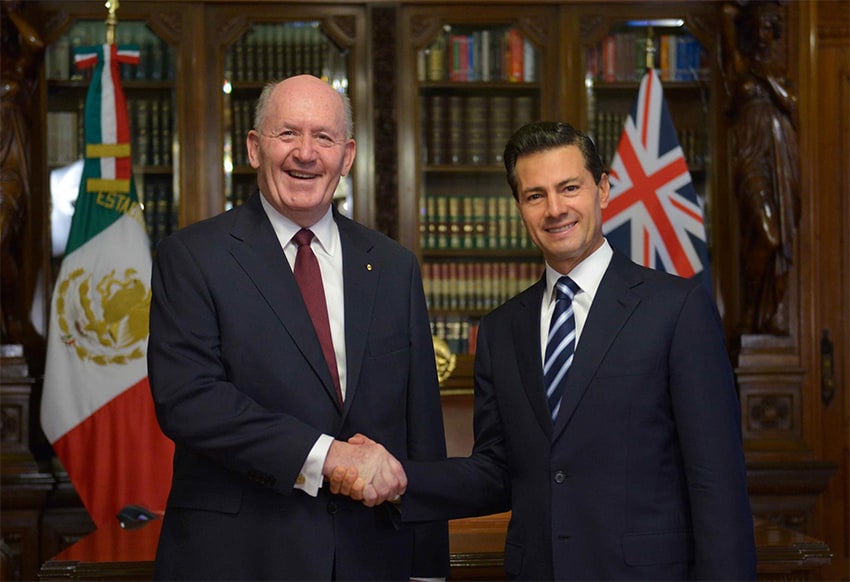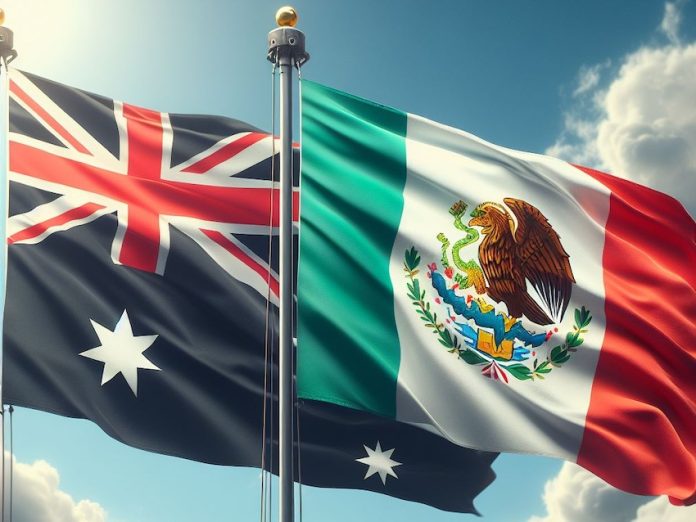Editor’s note
Welcome to the first Mexico News Daily Global Mexico series, exploring Mexico’s relationships with other countries around the world. We launch with “Australia in Focus”, a week of stories about relations between Mexico and Australia. What is the diplomatic history between the two? What do these two geographically distant countries have in common? What are Australian companies and individuals working on here in Mexico?
Be sure to check our site every day this week for a new story about the Mexico-Australia relationship, and stay tuned for our next Global Mexico series in March.
Kate Bohné, chief news editor
A deepening bond despite the distance
Three months before making a historic first visit to China by an Australian prime minister, Gough Whitlam became the first Australian prime minister to visit Mexico, where he met with Mexican president Luis Echeverría Álvarez in Mexico City.
“In Mexico, which is a leader of opinion in Central and South America, my delegation and I received an enthusiastic and warm reception, especially from President Echeverría and Foreign Minister [Emilio Óscar] Rabasa,” Whitlam told the Australian Parliament shortly after his July 1973 trip.
“I believe the visit has opened a window onto Central and South America; that in [the] future we shall have more frequent and meaningful contacts with Mexico and, indeed, with
other Latin American countries.”
Just over 50 years later, Australia and Mexico remain geographically distant, but the relationship between the two nations has grown closer, just as Whitlam suggested it would.
A brief history of key developments in Australia-Mexico relations
Before we look at at the state of the bilateral relationship today, let’s first go back to the 1960s.
Formal diplomatic relations between the two countries were established in March 1966 when the Prime Minister of Australia was Harold Holt and the president of Mexico was Gustavo Díaz Ordaz.
Those two men — the former Australia’s most famous drowning victim, the latter Mexico’s president when the infamous Tlatelolco Massacre occurred — never met, but their respective governments established embassies in each other’s countries.
Even before diplomatic relations began, Australian flag carrier Qantas established another important connection between Australia and Mexico, commencing in 1964 the so-called “Fiesta Route,” which linked Sydney to London via Fiji, Tahiti, Acapulco, Mexico City, The Bahamas and Bermuda.
“Plenty of Australians still have great memories of the Fiesta Route, including some very lucky Qantas employees,” Qantas says on its website.

The service, which ended in the mid 1970s, resulted in many Australians visiting Mexico, giving a boost to people-to-people links between nationals of the two nations. More on such ties later.
While Echeverría didn’t visit Australia as president, just a couple of years after his six-year term ended he took up a post as Mexico’s ambassador to Australia, a position he held for just over a year in the late 1970s.
In 1982, Australia and Mexico entered into an agreement on scientific and technical cooperation, which provided a platform for collaboration that has increased over the years.
Eight years later, Carlos Salinas de Gortari became the first sitting Mexican president to visit Australia, where he met with Prime Minister Bob Hawke.
“I have come to strengthen the friendship and frank understanding that unite Mexico and Australia,” Salinas said at a lunch with Hawke in Canberra in June 1990.
During the trip, the Mexican president advocated greater trade between the two countries, telling the Australian Parliament there was “a great opportunity to intensify our trade relations and our cultural and tourism exchanges.”
In 1989, Reuters reported shortly after Salinas’ visit, Mexico’s exports to Australia were worth US $77 million, while Australia’s exports to Mexico were worth $30 million.
This century, collaboration between Australia and Mexico has increased in a range of areas, with the two countries signing memorandums of understanding on energy, mining, agriculture, education and indigenous cooperation, among other things.
Australian prime ministers and Mexican presidents have met on numerous occasions since the inaugural meetings in Mexico and Australia in 1973 and 1990, respectively. Several of the more recent meetings occurred at APEC and G20 summits.

In 2016 — the 50th anniversary of the establishment of Mexico-Australia diplomatic relations — Australia’s governor general at the time, Sir Peter Cosgrove, visited Mexico City and met with then Mexican president Enrique Peña Nieto.
Australia and Mexico “share interests regarding global economic liberalization and regional integration,” the Mexican government said at the time.
It also noted that “Australia was Mexico’s 29th largest trading partner worldwide [in 2015], with bilateral trade standing at $1.6493 billion USD.”
Thus, the value of two-way trade had increased by more than 1,400% in the space of 26 years.
While problems are common in bilateral relations, there haven’t been any major disagreements between Australia and Mexico, perhaps due to the vast geographical distance between the two nations.
“The relationship between our people and our countries has always been friendly, prosperous and open, and this continues to be the case,” Cosgrove said in Mexico City in 2016.
The modern-day relationship between Australia and Mexico
Mexico is Australia’s largest trade partner in Latin America, with two-way trade worth just under US $1.95 billion in 2022, according to the Mexican government. Mexican exports to Australia accounted for over 60% of the 2022 total.
Cars, medical instruments, fruit and vegetables, and alcoholic beverages including beer and tequila are among the products Mexico sends to Australia, while barley, iron, steel and wine are among the goods shipped in the opposite direction.

“In 2022, tequila consumption has increased rapidly, placing Australia as the third largest [per capita] consumer of tequila in the world,” according to the Mexican government.
“Other Mexican distillates, such as mezcal, have been very well accepted as niche products in the Australian market,” the embassy says.
Facilitating trade between Australia and Mexico is the Comprehensive and Progressive Agreement for Trans-Pacific Partnership, a free trade pact that entered into force in late 2018 and to which 11 countries are party.
While trade is one pillar of the Australia-Mexico relationship, joint participation in a range of international organizations is another.
Those groups include the Asia-Pacific Economic Cooperation (APEC), the G20 and MIKTA, a grouping that includes Mexico, Indonesia, South Korea, Turkey and Australia.
“Mexico and Australia share topics of interest on the multilateral agenda, in particular, climate change, disarmament, human rights, trade liberalization, combating transnational organized crime and terrorism [and] nuclear non-proliferation,” according to the Mexican government.
As mentioned earlier, another aspect of the bilateral relationship — and one that goes beyond government ties — is scientific and technical cooperation. In a four-year period between 2015 and 2018, more than 3,100 Australian researchers collaborated with Mexican researchers on projects in a range of fields including medicine, agriculture, biology, astronomy and physics.
While it’s not part of the Australia-Mexico relationship as such, another connection between the two countries is the (admittedly minor) rivalry in men’s soccer, or football.
The “Socceroos” have played “El Tri” on six occasions for two wins, one loss and three ties.

However, the two teams are yet to meet at a FIFA World Cup. Will there be a first World Cup showdown at the 2026 edition of the tournament, which Mexico will co-host with the United States and Canada?
“Deepening” people-to-people links between Australians and Mexicans
People-to-people links are another important aspect of any bilateral relationship, whether they are between high-ranking political leaders, business people or anyone else.
According to the Australian government, people-to-people links — defined by the Lowy Institute think tank as “ongoing, biding friendships and business relationships between individual people across national boundaries” — between Australia and Mexico are “deepening, with increasing numbers of Australians visiting Mexico and increasing numbers of Mexican students choosing to study in Australia.”
Australian residents of Mexico and Mexican residents of Australia are perhaps best-placed to develop such friendships and relationships in an Australia-Mexico context.
Australian filmmaker Michael Rowe is one such person in the former category, while restaurateur Rosa Cienfuegos fits into the latter. We’ve profiled both here at Mexico News Daily.
On a personal note, I — an Australian resident of Mexico for more than 10 years — can vouch for my own strong people-to-people links with Mexicans, including within my family.
My wife is Mexican and our young son is a dual Mexican-Australian citizen. We hope he grows up as both a proud Australian, y un mexicano orgulloso.
By Mexico News Daily chief staff writer Peter Davies (peter.davies@mexiconewsdaily.com)
